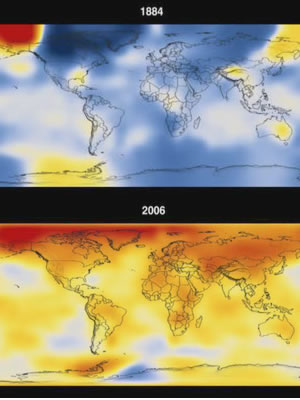Satışlarınızı farkedilir ölçüde artıracak 10 E-mail Marketing Stratejisi
Örneğin; websitenize gelen ziyaretçilerin %99'u ilk gelişlerinde sitenizden alışveriş yapmadan ya da online satışınız yoksa alışveriş kararı almadan ayrılma eğilimindedir. Ancak sitenizde ilgi çekici yöntemlerle müşteriyi form doldurmaya yönlendirdiğinizde, ziyaretçileri database'inize ekletebilir; e-mail marketingi yeni oluşan ilişkilerinizi sürdürmek ve güçlendirmekte kullanabilir ve en nihayetinde bu üyelerinizi alışveriş yapan aktif müşterilere çevirebilirsiniz.
Müşterilerinizle iletişim halinde olmak ve sağlam ilişkiler kurmak için, böylelikle sadık bir şekilde hep sizden alışveriş yapmalarını sağlamak için en iyi ve en ucuz yöntem e-mail marketing'dir.
E-mail marketing her koşulda işe yarar. PostFuture'in yaptığı araştırma sonuçlarına bakalım: Dünyada 1 MİLYAR'dan fazla, Türkiye'de ise 30 milyona yakın Internet kullanıcısı var ve kullanıcıların %90'ı e-posta kullanıyor. Bunlardan %70'i ticari firmalardan izinli e-posta gönderimleri alıyor. Online alışveriş yapan kullanıcıların %82'sine gönderilen e-posta ile ulaşan en az bir satış kampanyasının sonucu satışa dönük olurken, %32'si bir e-postaya cevaben, anında ilgili siteden satın alma geçekleştiriyor.
Bu rakamlar incelenince, hala e-mail marketing stratejilerinin sunduğu avantajlardan yaralanmaya başlamamış şirketlerin olduğuna şaşırmamak elde değil. Email marketingi kullanarak karınızı yükseltecek fikirlere ihtiyacınız varsa, işte size iyi bir başlangıç sağlayacak ve faydası ispatlanmış 10 e-mail marketing taktiği
1. Düzenli kampanya gönderimleri hazırlayarak üyelerinizi sık ziyerete teşvik edin:
En temelde e-posta adreslerini toplamaya başladığınızda, müşterilerinize ve üyelerinize kampanyalarınız ile ilgili sık sık e-posta gönderebilirsiniz. Düzenli bir şekilde gönderilen indirim duyuruları, müşterilerinizin size ve sitenize ısınmalarına ve kalıcı müşterilere dönüşmelerine yardımcı olacaktır.
2. Hatırlatma maillerinizde promosyonlara da yer verin
Eğer perakende değil de servis sektöründe faaliyet gösteriyorsanız, randevularınız için müşterilerinize hatırlatma gönderileri yaparak e-mail marketing'in gücünden faydalanabilirsiniz.
Örneğin bir tango hocasısınız. Yeni öğrencilerinizin ilk derslerinden 3 gün önce onlara bir hatırlatma mesajı atıp, kursun yerini ve dersin saatini bildirebilirsiniz. Aynı mesajda, müşterinize yanında bir arkadaşını getirip kursa kaydettirirse ders ücretinde %25 indirim alacaklarına dair bir kupon da ekleyebilirsiniz!
3. Potansiyel müşterilerin peşini bırakmayın
E-mail gücünüzü kullanarak yüz yüze konuşma fırsatı bulup e-posta listenize kaydettiğiniz ancak henüz müşteriye dönüştüremediğiniz kişileri takip edebilirsiniz. Bu insanlara, soruları varsa cevaplayabileceğinizi, ne zaman isterlerse onlarla iletişim kurabileceğinizi bildirin. Böylelikle, takip ettiğiniz bu potansiyel kitleye beklemedikleri ekstra bilgiler sunarak onlari gerçek müşterilere çevirmedeki şansınız artacaktır.
4. Müşterilerinize elektronik hediye çekleri gönderin
Bu yöntem, hali hazırdaki müşterilerinizin sizden devamlı alışveriş yapmalarını sağlamada çok etkilidir. Müşterilerinize e-posta yoluyla bir kupon gönderip bunu basıp kasada göstermelerini isteyebilir ya da sanal bir kupon ileterek websitenizden indirimli alışveriş yapabileceklerini söyleyebilirsiniz. Bu kuponlara son kullanım tarihi eklemek, müşterinin satın alımını en kısa zamanda yapmasınıı sağlamada etkili olacaktır.
5. İlişkinin kurulması: Küçük sanal hediyelerle güvenirlik kazanın
Üyelerinize belli bir değeri olan, orjinal bir e-kitap gibi sanal hediyeler göndermeniz, sizi tanıyıp size güven duymalarını sağlayacaktır. Bu güvenirliği sağladığınız anda, e-posta listenizdeki üyelerinizin kalıcı müşterilere çevrilmesi konusunda şansınız çok büyük ölçüde artacaktır. E-posta ile gönderdiğiniz bu hediyeler, özel bir rapor dan bir yazılımın demo sürümüne kadar, üyelerinizin seveceğini düşündüğünüz herhangi bir şey olabilir.
6. Müşterilere özel etkinlikler düzenleyin
Diyelim ki bir restoran işletiyorsunuz ve müşterileriniz size e-posta adreslerini veriyor. Her bir müşterinize bir e-mail göndererek onları sadece özel müşterilerin katılacağı bir şarap tadım gecesine davet edebilirsiniz. Bu gibi ödüller müşterileriniz ile sürdüreceğiniz uzun ömürlü ilişkinin sağlanmasında büyük rol oynayacaktır.
Eğer online bir şirkete sahipseniz, sitenizde sadece müşterilerin kullanabileceği özel bir bölüm hazırlayıp, sonra da müşterilere, bu özel sayfalardaki indirimler ve ayrıcalıklar ile ilgili ayrıca bildirim mesajları gönderebilirsiniz.
7. Müşterileinize takip mailleri gönderin
Bir satışın arkasından yapılan takip mailleri en çok geri dönüş alınan e-marketing kampanyalarının başında gelir. Bu tip mailer tek serferlik müşterilerinizi düzenli müşteriler haline getirir. Özellikle takip mailinde ilk aldıkları ürünün tamamlayıcı başka ürünlerini tanıtırsanız geri dönüş çok başarılı olacaktır.
8. "Arkadaşıma Yolla" iletimlerini destekleyin
'Önerilmek' istiyorsanız, e-posta gönderimleri bu konuda harika bir aracı olacaktır, zira insanların e-postaları ailelerine, arkadaşlarına ve iş çevrelerine iletmesi çok kolay bir işlem. Göndediğiniz e-bültenlerin ya da kampanya gönderimlerinin üyelerinizin mesajı forward etmek isteyecekleri türde olmalarına dikkat edebilirsiniz.
Hatta üyelerinize, "Paylaş" özelliği ile çevresine ilettiği mesajlardan her biri için bir ödül verebilirsiniz.
Euro.message sistemindeki "Arkadaşınla Paylaş" ve "Sosyal medyada Paylaş" özelliği sayesinde yaptığınız tüm email gönderilerinin, 100'ün üzerinde farklı sosyal medyada iletilemesini sağlayabilirsiniz. Ayrıca bu yolla yeni üyeler toplayabilir, kaç üyenin sosyal medyadan geldiği bilgisini de raporlayabilirsiniz.
9. Ürününüzü elektonik yoldan gönderebilirsiniz
Bir kitap yazdığınızı ve websitenizden tanesini 20 TL'ye sattığınızı varsayalım.
Kitabınız için dijital bir sürüm yaratarak -ki bu düşündüğünüzden ÇOK daha basit bir iş- bu dosyayı müşterilerinize e-posta aracılığı ile gönderebilirsiniz. Elbette baskı masrafları, depo kirası, ambalaj, sevkiyat gibi dertleriniz de olmayacağından, karınızı bu maliyet azaltıcı yöntem sayesinde büyük oranda artırmış olacaksınız.
10. E-mail yolu ile bilginizi satın ve sürekli bir gelir oluşturun
Belirli bir konuda uzmansanız, öyleyse ayrıcalıklı bir e-bülten oluşturabilir ve bu özel gönderimler karşılığında üyelerden üyelik ücreti alabilirsiniz.
Elbette e-pazarlama stratejilerini çoğaltmak mümkün. Satış hızınını yönetmenin aslında ne kadar kolay olduğunu farkedince kendiniz kendinize de yeni stratejiler üretebileceksiniz! Eğer arzu edereseniz euro.message danışman grubumuza başvurun, sizin için projeler oluşutalım, e-pazarlama gücünüzü arttıralım.
 In Portland on July 14th, renewable energy was at the forefront of conversation. The Siemens Smart Grid Tour rolled into Portland on Wednesday, where integrating renewables into the power grid was a hot topic for local utilities. One such example, Puget Sound Energy recently announced that it will build a 350 megawatt wind turbine farm, The Lower Snake River Wind Project in Washington State. This project will supply power to 100,000 homes.
In Portland on July 14th, renewable energy was at the forefront of conversation. The Siemens Smart Grid Tour rolled into Portland on Wednesday, where integrating renewables into the power grid was a hot topic for local utilities. One such example, Puget Sound Energy recently announced that it will build a 350 megawatt wind turbine farm, The Lower Snake River Wind Project in Washington State. This project will supply power to 100,000 homes.




 [Image: Photo by
[Image: Photo by 
 [Image: Photo by
[Image: Photo by  [Image: Photo by
[Image: Photo by